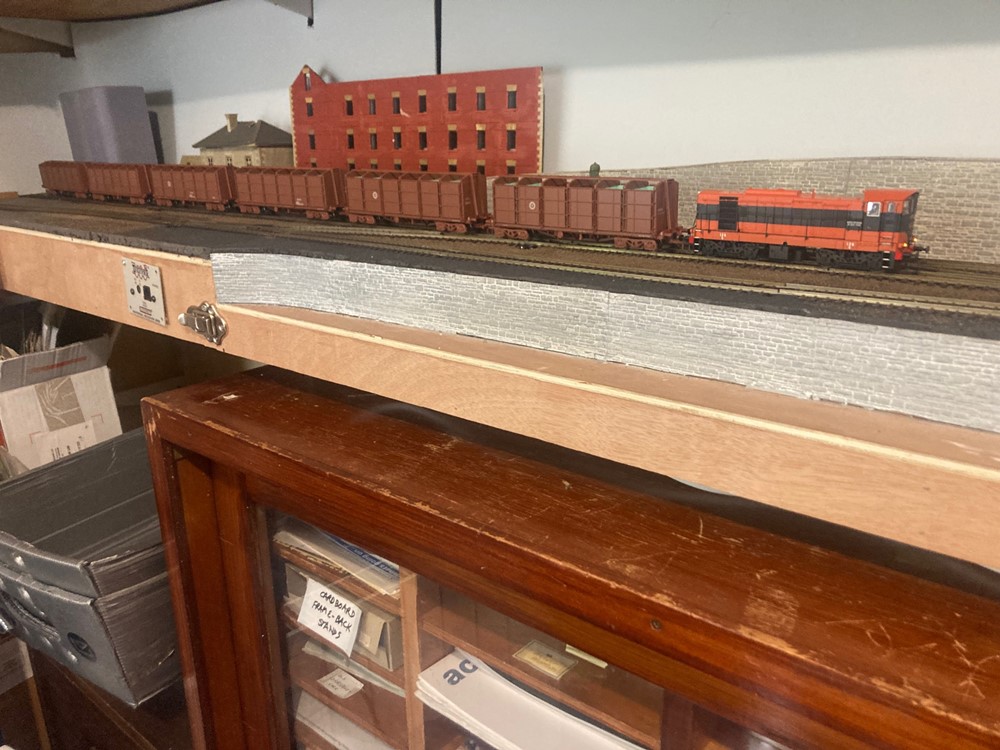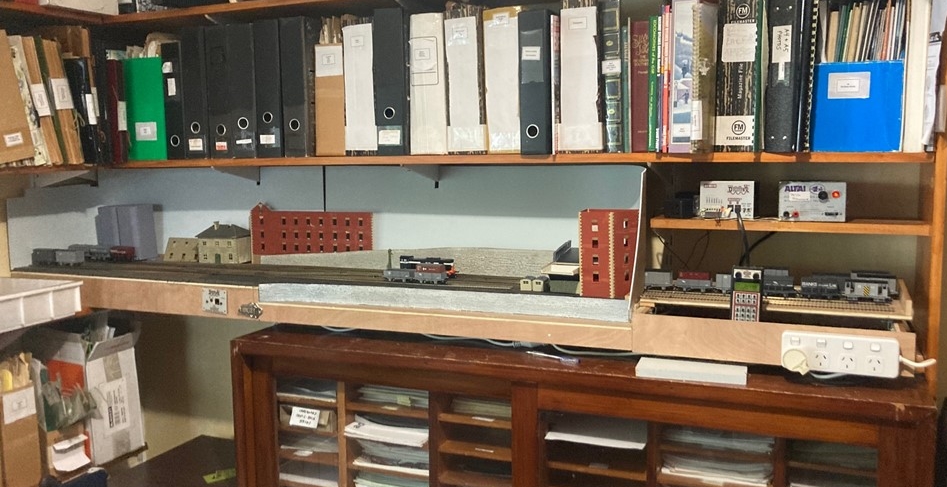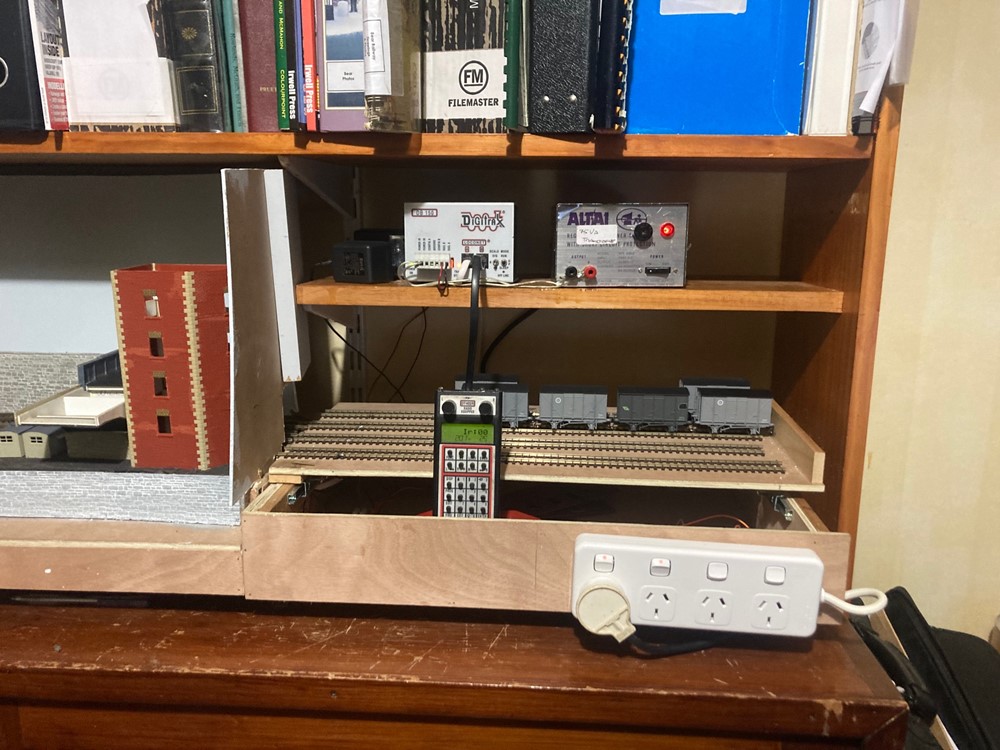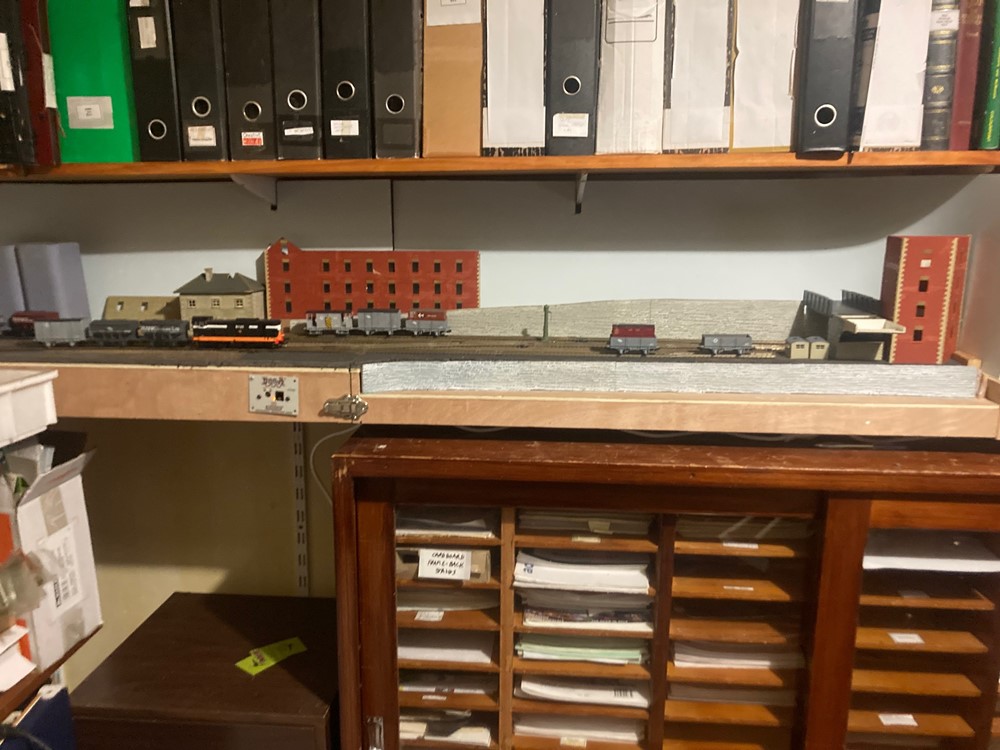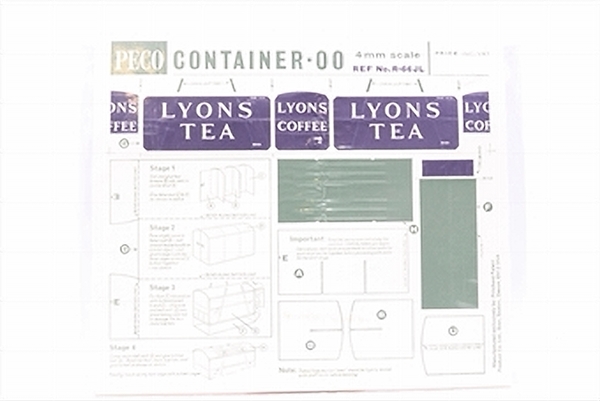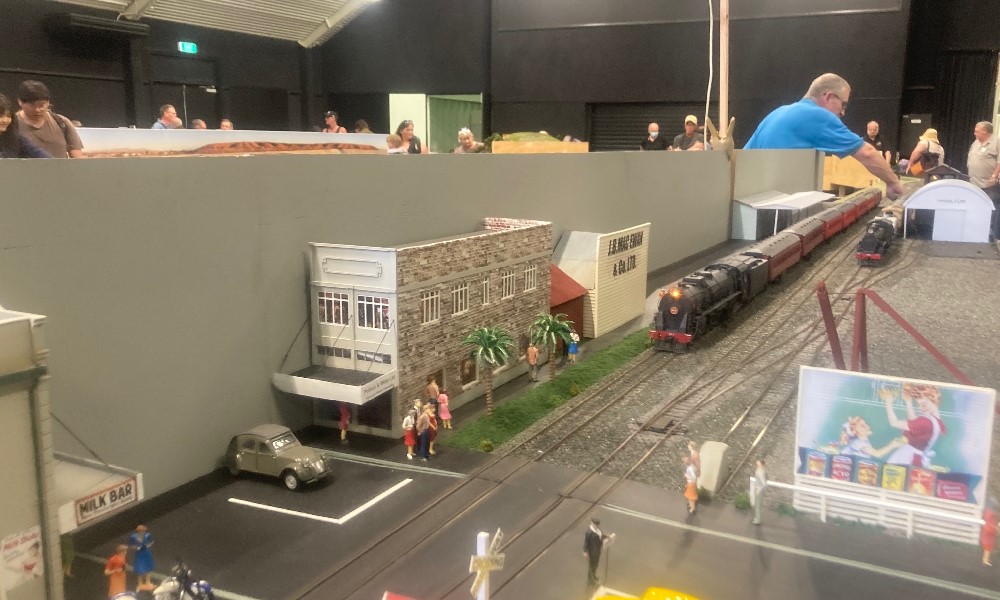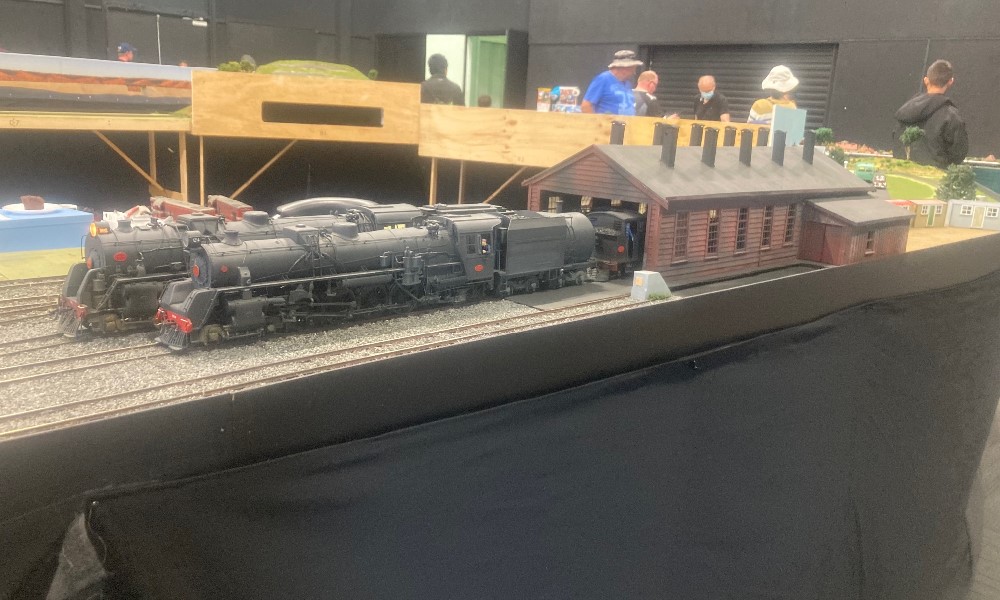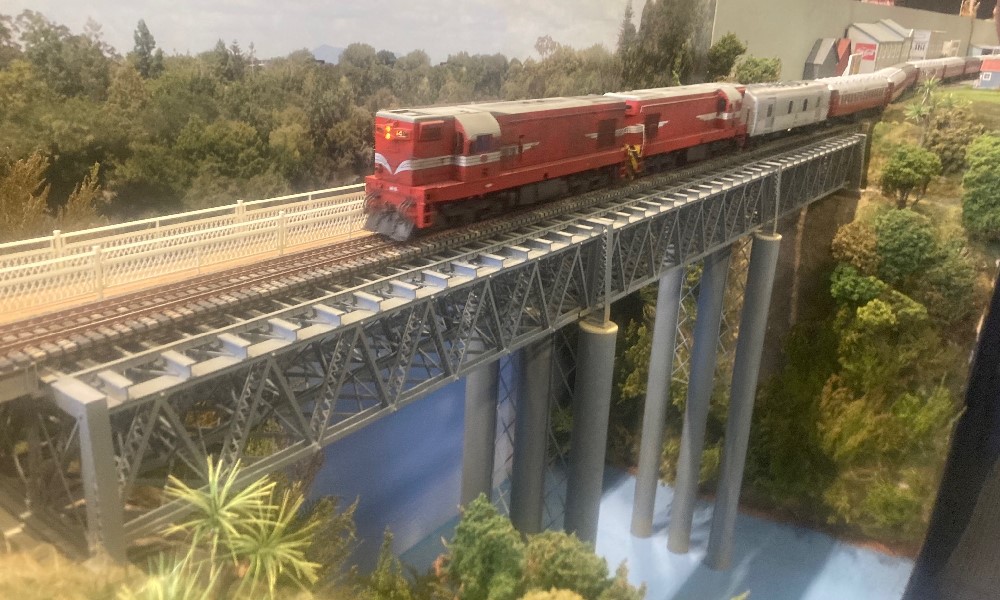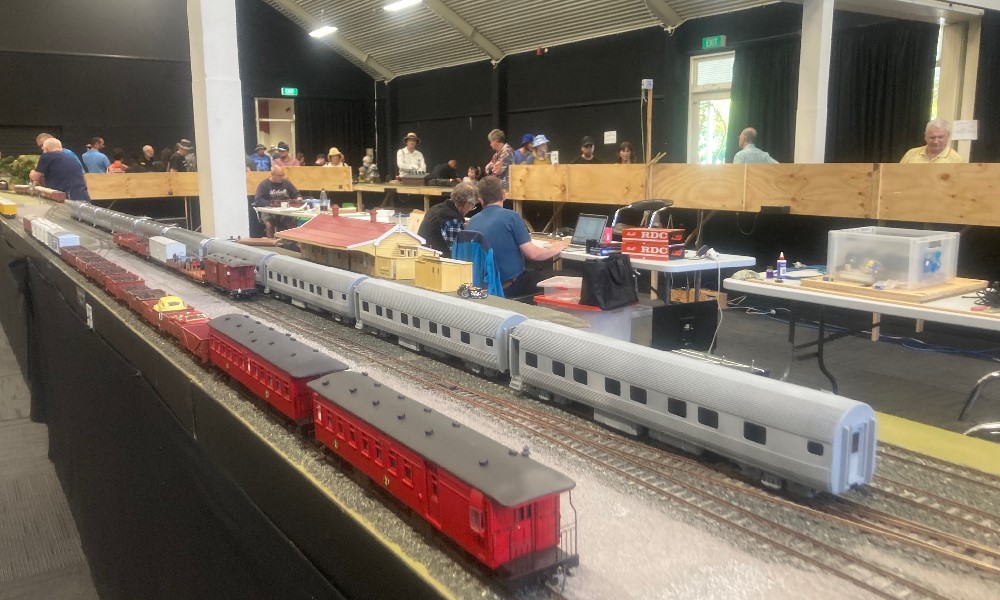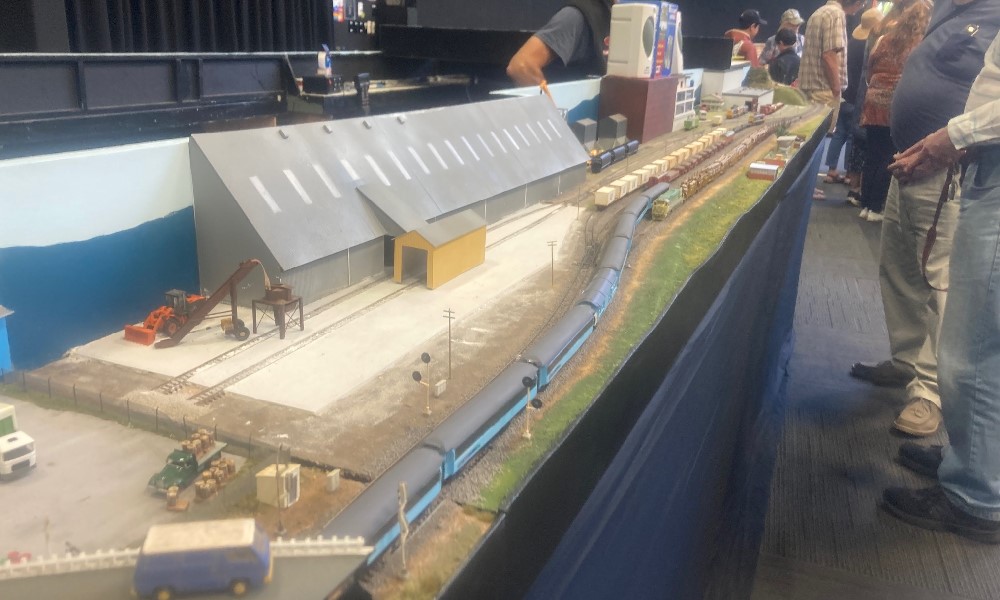-
Posts
4,853 -
Joined
-
Last visited
-
Days Won
119
Content Type
Profiles
Forums
Events
Gallery
Blogs
Store
Community Map
Everything posted by Mayner
-

Ernies Massive Irish 1930's to 2005 Photo Archive
Mayner replied to Glenderg's topic in Photos & Videos of the Prototype
Quite common, MGWR standard design to replace cabins destroyed as a result of the Civil War. "Rock faced" concrete block base, internal staircase and frame placed at the rear of the cabin. -
CIEs losses increased significantly and UTA/NIR financial position improved in 1965/6 after the overnight "Derry Vacuum" was diverted to run via Lisburn and Antrim following the closure of the GNR Derry Road. The "Derry Vacuum" Irelands first fully fitted express freight or Liner Train was worked by a CIE loco between North Wall and Lisburn, with the UTA and NIR responsible for providing motive power (MPD, 70 Class Railcars, Hunslets & 111) between Lisburn and Derry. CIE were responsible for track maintenance and signalling costs in connection with the Derry Goods and freight terminal costs at Adelaide and Derry, I think the goods terminal staff at Adelaide and Derry may have been CIE rather than NIR employees who worked under the same conditions as their NIR colleagues. Jonathan Allen's Flickr site has a good selection of photos of Derry goods traffic including fertiliser wagons and Uniload containers at the Waterside station. https://www.flickr.com/photos/152343870@N07/38707384890/in/album-72157690221607481/ & 70 Class Power Cars hauling a very mixed Derry Goods made up of a mixture of bagged, bubble cement, CIE container and what looks like Back to Back Fertiliser https://www.flickr.com/photos/152343870@N07/40247664354/in/album-72157713209886488/
-
Great progress, your models of Ballywillian and Crossdoney bring back memories of a sunny August afternoon I spent about 30 years ago in a Ford Escort Van exploring the Cavan Branch between Float and Crossdoney. I like your model of Graiguenamagh Creamery small creameries were a distinctive feature of regions where dairy farming was significant until the industry was modernised with bulk collection (from the farm) and large processing plants during the 70s and 80s. A small creamery diorama with a queue of horse & VW drawn carts, tractors & trailers is almost a must for a 1900-1970s layout set in dairying areas like West & East Cork, North Kerry, Cavan, Monaghan, Longford, Kilkenny
-
My order arrived this afternoon 6 days shipping by DHL Carrickmines to Hamilton New Zealand. I once saw a single 121 working an empty? northbound Fertiliser Train out of Cork during the loco crisis of the early 1990s
-
It looks like a conversion of a 1356-1371 series Corridor 3rd/2nd introduced in the early 50s, these ran on GSR Bogies and had a more upright profile than the Laminate Brake Standards 1909-13 which were introduced in 1958-9. Some of the 1356-1371 coaches were converted into Brake Steam Generator Vans with the same window/door arrangement during the late 1970s
-
I re-located North Wharf from the garage to the home office which theoretically should frees up space in the garage to work on a 'permanent' 21mm gauge layout if I ever get round to making a decision on the N Gauge layout that's taken North Wharf's place in the garage and other junk. North Wharf is basically a OO replacement for a 21mm dock layout I started 10 years ago but could not get to work in the same space because of the larger min-radius curves and longer points required in 21mm. I was also a bit to ambitious in incorporating two hand laid double slips in the crossover between the running lines and dock trackage. The new layout incorporates the distillery buildings, retaining wall and overbridge from the dock layout, which have not warped or twisted in nearly 10 years. Electrically the layout is fed by a 4 way power box which will feed transformers for DCC Track Power, IR wireless or Radio Control, Point and Lighting power . I will fit the layout with a lighting pelmet/proscenium arch arrangement to eliminate shadows and hide the shelf supports and a removable panel to disguise the traverser and control equipment. Operationally the next jobs are to connect the IR/RC panel and the points to a power source and load the layout and wagon stock onto JMRI Operations in order to create "Train Consists" and 'Switch Lists" With a maximum train length of 6 wagons and a maximum stock of 18 wagons and 5 possible destinations Operations should give some purpose to operating the layout and minimise the risk of boredom.
- 56 replies
-
- 12
-

-
The MRSI used the RDS as an exhibition venue during the 1970s and 1980s, but moved to smaller venues because the cost of using the RDS became uneconomic. Attendances were very good during the 70s but the numbers dropped off as model railway exhibitions ceased to be a novelty to the general public. Although the RDS exhibitions were drawing good crowds, the exhibitions were struggling to break even and committee members were worried about loosing their homes, some UK clubs had similar experiences with high venue hire costs and the chilling effects of large national events such as Warley on regional exhibitions. There has been a considerable level of co-operation between clubs with MRSI, SDMRC, NDMRC and Wexford MRC and smaller clubs layouts appearing at each others exhibitions since the 1970s. I don't know if there is enough of a critical mass or interest among the Clubs to establish an umbrella body to promote Irish modelling and arrange conferences where modellers can socialise, play/buy trains and visit each others layouts similar to the recent NZMRC https://www.modelrailcon.nz/ , NMRA or UK "Scale" society conventions as opposed to staging a public exhibition.
-
I blame Tullygrainey BCDR D1 build for taking me down the "Harlandic" rabbit-hole to discover the Silver City Comet an air conditioned train that ran between Parkes and Broken Hill New South Wales. (920km-570 Miles). I knew H&W supplied locos/power units to Argentina, Canada and the Sudan, but New South Wales was completely new to me. Similar in principal to other 1930s 'streamliners the Silver City Comet consisted of a 'Power Van" hauling 2-3 light weight coaches. Five diesel hydraulic power vans were originally fitted with 330hp Harlandic two stroke diesel engines and Voith Sinclair transmission geared to a maximum speed of 79mph with separate generator sets to power the lighting and AC. The remaining power vans were re-built with 250hp GM two stroke Detroit diesel engines and Alison transmissions in 1953 apparently as a result of difficulty obtaining spare parts. However you look at it Silver City Comet appears to have been the most successful application of Harlandic diesel engines in rail traction, successfully operating high speed services in harsh Australian outback conditions. The Harlandic engines were Danish Budmeister & Wein engines (now MAN 2 stroke marine division) built under license in Belfast, peeping down the rabbit hole the Danish State Railways began using diesel traction from the late 1920s including "power vans", and a 2-D-2 boxcab type that operated between 1932 and 1959. Haven't been able to figure out (Google translate) if any of the earlier DSB locos used B&W engines.
- 1 reply
-
- 1
-

-
I like D1 Steam Outline appearance complete with what appears to be a bunker and side tanks, the other Harlandic diesels had similar design features. At the time (1933) D1 was ground breaking in terms of a mixed traffic diesel electric loco capable of 60mph branch line or light main line service.
-

Limerick to Foynes railway reopening plan
Mayner replied to spudfan's topic in What's happening on the network?
The initial shipments from Tara Mines were railed through Foynes (possibly in Mogul or Barytes wagons) as a result of an industrial dispute at Dublin Port. The Tara Mine Terminal on Gouldings Wharf was blacked by former Goulding Fertiliser workers in an attempt to improve their redundancy payout. Its difficult to see Tara output being transferred from Dublin Port to Foynes. Its likely to take at a number of years to construct an ore terminal capable of unloading high capacity bogie wagons at Foynes, while Tara Mines appears to be approaching the end of its economic life with an estimated 8 years reserves in 2020. Its possible that Boliden may absorb the output of the Pallas Green ore body as a replacement for Tara Mines as it approaches exhaustion, as opposed to the Pallas Green output going to a different smelter. -

British stuff from the Catacombs
Mayner replied to jhb171achill's topic in British Outline Modelling
The 'kink' is possibly as a result of the lifting of a crossing loop or singling of a section of double track. Its possible the train is arriving at Bridport the terminus of the 9¼ mile branch from Maiden Newton after the branch was reduced to a 'basic railway" in 1968 with the run-round loop and goods yard removed at the terminus. There was a similar abrupt "kink' in the main line at the Dublin end of Enfield where the running road was slewed from the Down to the Up side of the formation after the MGWR main line was singled during the 1920s -

British stuff from the Catacombs
Mayner replied to jhb171achill's topic in British Outline Modelling
One of my favourite spots West end of Lincoln station, early 1970s. https://www.alamy.com/stock-photo-lincoln-city-lincolnshire-england-high-street-level-crossing-and-train-43710963.html?imageid=5A922C76-18F0-4BB3-9E2A-86F8FCE0F3AE&p=639791&pn=1&searchId=a1771b59e91c7c95d700fa08184e0b84&searchtype=0 -
£87 on an item that sell on line in Ireland for €80 is a nice mark up especially when you consider IRMs customer discount and the lower UK Vat rate. It reminds me of a small Dublin "supermarket" that bought bread retail from Dunnes rather than from a bakery or cash and carry.
-

British stuff from the Catacombs
Mayner replied to jhb171achill's topic in British Outline Modelling
There is an interesting parallel between the Scottish Region and the GSR in the 30 & 40s both used battery electric railcars. The 43 mile Aberdeen-Ballater line was worked by a Battery Multiple Unit (BMU) from the late 1950s until closure in 1966, the BMU was acquired by the RTC in Derby following closure and survives on the Royal Deeside Railway who re-opened a section of the Ballater Branch. The economics of both the Drumm Train and DMU appears to have been based on the availability of cheap hydro electricity, the BMU appears to have been a joint venture between the Scottish Region and the North east Scotland Hydro Electric Board. Interestingly the battery and diesel multiple running costs on the Aberdeen-Ballater line were similar and batteries used on the Drumm Trains and BMU appear to have had a similar life span (and the batteries on my garden railway locos nearly 60 years later!) The train in the photo appears to be a conventional DMU the BMU was based on a Lightweight Derby Unit with large panoramic cab windows. https://railscot.co.uk/articles/Aberdeen_to_Ballater_by_BMU:_Notes_on_the_Battery_Railcar_Experiment/ Perhaps 'Senior" visited the Ballater line to check out the battery electric railcar and charging equipment. -
David That sure takes me back, my first journey on the DART was on a sunny July 84 Saturday! The Push-Pulls and the majority of early 1950s coaching stock were withdrawn following the commissioning of the DART in July 1984. One Push Pull set was retained for use on Bray-Greystones shuttles, the set used on the shuttles were fitted with main-line seating but was otherwise became increasingly decrepit. The shuttle was worked by a (B) 201 Class until replaced by a 121 in 87 or 88 shortly before being replaced by an NIR 80 Class which operated a more frequent service. A lot of the early 50s stock went to the Great Southern Railway Preservation Society at Mallow and Tralee and Westrail Tuam, a few may survive at Downpatrick. The introduction of the Mk3 stock allowed Cravens, Park Park Royal and TL fitted Laminate stock to be cascaded from Main Line to outer suburban and branch line services, with Cravens appearing on Connolly-Drogheda trains in 84-5.
-
The Type A Lyons Tea containers still appear to be available as a card kit. These were introduced for use with the Peco Wonderful Wagons container wagon which was considered to be state of the art with sprung buffers and sprung chassis by the standard of the 1960s. I usually saw one of these containers (in an open wagon) in a train being shunted by an E Class on the Kingsbridge (Heuston) Goods head shunt viewed from the top deck of the 23 bus during the mid late 60s. The Lyons Tea containers seem to have appeared singly so possibly one container to each depot on a weekly or possibly more frequent cycle
-
In this part of the world Labour Holiday (last) weekend tends to be an important one for railway enthusiasts both model and full size with model railway exhibitions and main line steam running. The local clubs exhibition was the first large exhibition I visited in nearly 3 years, the larger layouts were mainly New Zealand and American outline, British and Continental mainly smaller layouts, the main objective was to buy some Kadee couplers and a trip pin adjusting pliers! The showpiece of the exhibition was the Hamilton Model Railroaders 9mm scale (O gauge track) Hamilton and Claudelands layout a model of the East Coast Main Trunk Line through the city and the Waikato River bridge before the railway was rebuilt to run through a tunnel under the city center and across a new Waikato Bridge. Victoria Street (main street) crossing and Hamilton Station. The railway was diverted to run through a tunnel through the goods yard area to eliminate the crossing. The site is now occupied by a large shopping center and office block, the 1930s brick building and one of the palm trees survived until recently. The Milk Bar is now an amusement arcade where young people 'hang out" The Train is probably the Rotorua Express one of NZR principal passenger trains hauled by a K Class 4-8-4 on account of the Rotorua Branch lines steep grades. These days the line through the city center tunnel is busier than ever but only carries freight. The loco depot with a J 4-8-2 and K 4-8-4 and a tank loco, these models are likely to be scratch or kit builds no one produces 9mm NZR rtr. Claudelands Bridge. Crossing the Waikato into my part of town the bridge was fabricated from 3D printed parts. The General Motors G12 and G8 export models were the mainstay of North Island main and branch line services from the late 50s until the much larger General Electric DX Class were introduced during the mid-1970s. The railway was diverted to run across a new pre-stressed concrete bridge alongside the existing line and the original railway bridge converted to carry road traffic. For a long time the footbridge alongside the railway bridge and local passenger trains was the main access from Claudlands and some eastern suburbs into the city center. Claudelands Station. A typical NZR small station with standard wooden building, single platform, running loop and yard layout. The 'silver coaches" is a model of the "Silver Star Express" a short lived 1970s luxury sleeper train that operated an overnight Auckland-Wellington services. The train was re-gauged from 3'6" to meter gauge and now operates as the Eastern and Oriental Express in Malaysia, Singapore and Thailand. The "silver coaches" and some of the locos and stock used on the layout are 3D printed using FDM technology which provides an acceptable finish in the larger scales TT 1:120 Scale. 1:120 using N gauge track and loco/rolling stock chassis is an established scale for modelling 3'6" gauge and provides a spacious effect and long trains to be run in a relatively small space. The model appears to be a large industrial site in the post 2000 era. Locos and stock appear to be assembled from locally manufactured kits, one of the interesting features was that some of the locos were fitted with sound including a distinctive English Electric engine sound from one of the locos. Metroland? This layout always brings back fond memories of living in London during the 80s with the nicely modelled LT infrastructure and the Metroland architecture though it was long past the era of red Tube & Surface trains and steam on the Met.
- 2 replies
-
- 11
-

-
The Bachmann N Class/Woolwich has a conventional chassis with wiper pick up and is not DCC ready There is a Jim Edgar article on converting one to DCC in Nov 2009 New Irish Lines https://www.dropbox.com/s/gcszt7h4f1felnl/New Irish Lines - Vol. 5 No. 4 - 2009 November.pdf
-
I took a photo of a Lyons Tea container on a 4w flat at Inchacore in the Mid-80s, possibly in use as a CME Dept. 'stores van" for storing/moving spare parts between Inchacore-Limerick and other depots. The |"Harp" containers may have been used for moving empty kegs between different brewery sites. Its likely IE ceased using containers for empty keg traffic following the introduction of the 3 tier Keg Cages in the early 1990s One of the last uses of the traditional H vans was a train transferring empty kegs from Dundalk to Kilkenny in 1978, the redundant vans were stored/dumped in Waterford North Wharf yard following the move.
-
Modelling a railway like the W&CI especially in the pre-1900 era will be challenging with little readily available information or trade support. Smaller companies like the W&CI bought their locos and stock from British builders/finance companies and drawings of W&CI locos and stock may exist in UK museum collections. It may be a case of working back through available Irish records to identify the builders and order dates for W&CI locos and stock before contacting British museums. A paper on the W&CI was published in an IRRS Journal during the 70s or 80s and there may be basic information on W&CI railway locos and stock in books on the GSWR and WLWR. The late Richard Chown appears to have relied on the original British builders drawings for the locos and stock on his 7mm pre-1900 Castlerackrent system https://highlandmiscellany.com/tag/castle-rackrent/ including oddities such as a Dublin & Meath Railway Brake Van and Cork Macroom Direct Railway covered goods. The Historic Model Railway Society may be able to assist in identifying which museum collections hold the relevant drawings. If you intend modelling W&CI locos and stock 7mm or O scale may be a better option than 4mm or OO in terms of the larger scale being easier for scratchbuilding and sheer physical presence of the smaller size of the stock and shorter trains than ran in the 1900 era.
- 45 replies
-
- 3
-

-

-
A few more Judith Edge Ruston & Hornby 88DS (CSE Carlow, Mallow. Thurles) Used with the High Level 23mm Quad Driver will result in durable model with realistic slow speed running Ruston & Hornsby 165DS (CSE & Westrail Tuam) Heavy duty diesel shunting loco. Harland & Wolff 0-6-0 LMS 7057 NCC/UTA 22 Worsley Works Duetz G611 Class
-

Irish Rail to buy more freight stock.
Mayner replied to spudfan's topic in What's happening on the network?
It looks like Tara Mines is approaching the end of its working life with 5 years ore reserves at the current extraction rate https://www.boliden.com/globalassets/operations/exploration/mineral-resources-and-mineral-reserves-pdf/2020/resources-and-reserves-tara-2020-12-31.pdf Its possible the 'ore wagons" may be intended for traffic from the Pallas Green ore body which just might get to the development stage after Tara closes. -
Its important not to get discouraged with problems finishing a kit. It takes time and practice to build up the skill and experience to assemble a locomotive kit. One of the great advantages of metal kits over other mediums is that its usually feasible to salvage/improve a kit if you run into problems on the first attempt. I had several false starts assembling the TMD (SSM) Midland Tank & J15 but succeeded on the second attempt after cutting my teeth assembling a pair of etched diesel shunter kits. It might be worth while trying a Judith Edge RH 88DS https://www.rmweb.co.uk/topic/161324-judith-edge-kits-suitable-for-a-beginner/ or even jumping up to O Gauge with one of the smaller "West Cork" locos before tacking a relatively large complex loco like a Bandon Tank Acquiring/accumulating the suitable tools and materials is one of the first steps in developing the right techniques, I still find Iain Rices book on assembling etched kits and Guy Williams 4mm Engine the Scratchbuilders guide useful after assembling over 30 odd kit and scratch built locos and designing my own kits.
-
Wagons/freight cars in goods/freight trains that shunt/switch at intermediate stations/yards were and still are usually marshalled in "station order" behind the locomotive to speed up shunting. In the case of the Burma Road goods wagons for stations Collonney Jnt-Claremorris were marshalled next to the loco wagons with Bell Traffic marshalled next to the van, traffic for the Mayo Road would have been detached from the train upon arrival at Claremorris and wagons for Tuam, Athenry, Gort, Ennis and Limerick attached to the front of the train without disturbing the Waterford Bell wagons. During the 'transition era" during the mid late 70s CIE sometimes ran trains of modern fitted wagons "loose coupled" with brake vans, the best examples are probably> 1. The Platin-Ballinasloe-Roscommon Bagged Cement which ran as a fully fitted 20 wagon train between Platin & Althone before being split into two 10 wagons loose coupled trains with brake van to reach its destination. 2. Dundalk-Adelaide Cross-Border Goods Dundalk-Adelaide goods trains continued to work loose coupled with modern fitted wagons after North Wall-Dundalk goods trains converted to fully fitted Liner operation. The Dundalk-Adelaide goods trains tended to be more varied in formation than CIE liner trains carrying container, keg, cement and fertiliser traffic on the one train. Dundalk involved considerable shunting and trip movements between the station, Barrack St yard and the Harp Larger Brewery siding plus Irish Customs examination of traffic arriving from Northern Ireland in the pre-Customs Union era. and staff changeover between CIE & NIR loco crews. Similarly principals apply with 'modern' fully fitted goods/freight trains, in its final years the 12:00 North Wall-Cork Liner conveyed Limerick traffic between North Wall and Limerick Junction. The loco driver and Limerick Junction crew were not impressed one weekend in Oct 2001 when they had to make two shunts to detach the Limerick traffic from the Liner because the Limerick traffic because the Limerick wagons were marshalled in two separate cuts delaying the departure of the Liner.
-

Ernies Massive Irish 1930's to 2005 Photo Archive
Mayner replied to Glenderg's topic in Photos & Videos of the Prototype
End view of an ex-GNR 700 series BUT railcar showing "Continental" style gangways. Inchacore apparently overhauled one set of BUT cars in the late 60s/early 70s that never re-entered service, later stored in Dundalk Paint Shop for potential sale to NIR and later scrapped.
.png.c363cdf5c3fb7955cd92a55eb6dbbae0.png)

